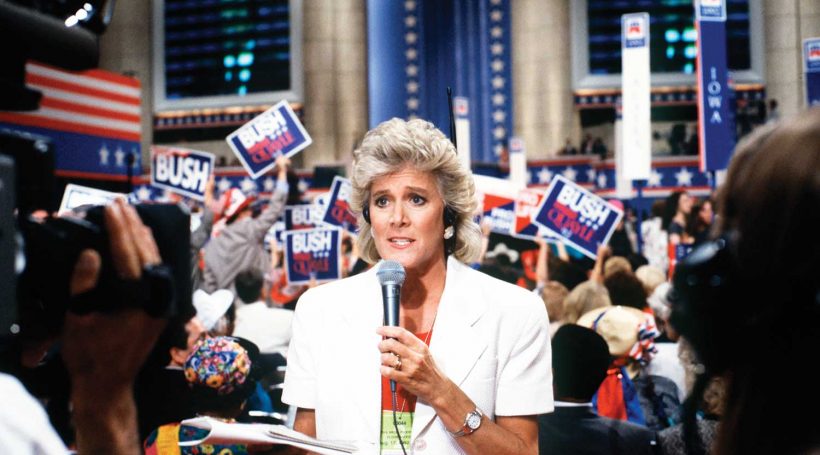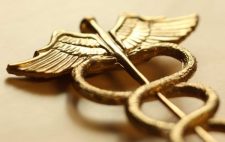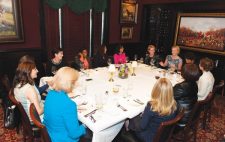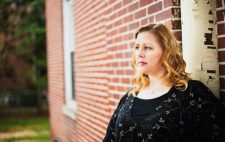For more than 20 years, Lynn Sherr chased down leads and asked the tough questions as an award-winning correspondent for ABC’s “20/20.” The job was hard, but the difficulties Sherr faced weren’t because of the complex stories – she says it was because she was a woman.
“I was told by every white male newspaper editor in New York when I got out of college: ‘We don’t hire girls,’” Sherr says. “And this was not 1820, this was 1963.”
Sherr landed her first reporting job at the Associated Press that year. “The timing couldn’t have been better, because I was at the Associated Press at the very beginning of the women’s movement,” Sherr explains. “And in those days, what was called the Women’s Liberation Front was so radical they wouldn’t allow men into their meetings as reporters. So for once, as the woman, I had the advantage.”
As she covered the movement and the women behind it, Sherr realized she was a feminist.
“That’s when I also discovered the history of women’s suffrage and the history of what our fore-mothers had gone through,” she says. “I have a vague recollection that somewhere in my American history book in junior high school there was some sentence like, ‘And then a bunch of crazy ladies in bloomers ran around to get women the right to vote.’ And it was seen as something silly. ‘Oh isn’t that sweet, those old battle axes ran around to get the right to vote.’ But I realized these women are extraordinary heroes. These women really made a difference in American history, in world history and in my life.”
The more Sherr read about women like Susan B. Anthony and Alice Paul, the more she became certain it was her job to follow their example. “Susan B. Anthony and her colleagues made it very clear that what they were doing was for the next generation. I realized they had done it for us, so we have to do it for others as well.”
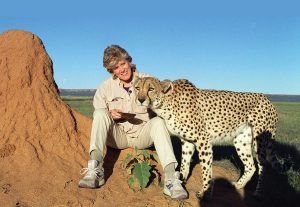
Lynn Sherr visited Namibia in 2001 for “20/20″
Sherr found the best way to continue the movement was through her work. “It wasn’t until women got into the newsroom in big numbers that we started seeing stories on battered spouses, breast cancer, equal rights for women in the workplace, the pay gap,” she says. “I think I may have done the first piece on television on sexual harassment, which would have been back in 1972. My bosses looked at me like I was nuts. No one had heard of this thing – it was so new that in the piece, we had to spell the word ‘harassment’ and explain what it was.”
Sherr says she and her female colleagues knew they were continuing to forge the path started by the women’s movement. “We were concerned with kicking down doors so they would be open for the next generations, and I think this has been terribly important,” she says. “It was partly for ourselves, and it was also for the young women coming behind us.”
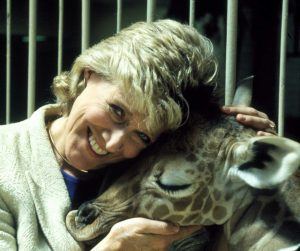 Looking back on her work, Sherr is confident she has brought some order to the world, a goal she has always strived for.
Looking back on her work, Sherr is confident she has brought some order to the world, a goal she has always strived for.
“The stories that I most enjoyed covering also were the ones that informed the public,” she says. She also loved writing about politics. “I covered politics at a time before the name of the game was spin, when politicians occasionally actually told you what they were thinking.”
Another favorite assignment? Covering the space program.
“I used to refer to myself as the color guy in the baseball booth – I was there for the feature stories, because I did not have a science background,” Sherr says. She joined ABC news anchor Frank Reynolds and science reporter Jules Bergman to cover the shuttle launches and the astronauts who manned them and eventually ended up anchoring the launches herself.
“I think we had too many correspondents who were smart but talked in science language at a time when viewers didn’t quite know what they were talking about,” she says. “And I, who had virtually no science background, would ask what we called ‘the dumb questions,’ even though there are no dumb questions. I guess the feeling was if I could understand it, they could understand it.”
Sherr says she loved interviewing the astronauts – among them Sally Ride, who became a personal friend.
“We just really hit it off. We spent a lot of time together,” Sherr says. “We were able to be friends and have a professional relationship with no problem whatsoever. She understood the rules of the game, and so did I.”
Sherr’s personal relationship with the astronauts made it all the more difficult when she watched, alongside the nation, as the Challenger space shuttle exploded shortly after takeoff on January 28, 1986, killing all seven crew members aboard.
“It was a personal loss,” she says. “I also felt the loss of the excitement of the space program. The space program was a way to the future, and suddenly that door was shut. And then as the revelations came out, it was a sense of betrayal that parts of NASA had really betrayed us, the American people, by saying that certain systems were in place when they were not. And that was just unforgivable.”
Her interview with Ride during the investigation of the Challenger explosion stands out in Sherr’s mind as one of her most important.
“This was a woman who had flown in Challenger twice, who understood what the dangers were,” Sherr remembers. “And when she said to me, ‘No I’m not ready to fly again’ – this was a real way of making NASA understand they just weren’t ready and they had to get their act together.”
Sherr continued her long acquaintance with Ride – even after the astronaut’s death. Ride’s obituary revealed to the world that she was survived by a partner of 27 years, Tam O’Shaughnessy. Sherr was contacted by O’Shaughnessy, who urged the shocked journalist to write Ride’s memoir.
“My initial reaction was: How come she didn’t tell me?” Sherr says. “How come I didn’t know all this stuff? And then I realized one: it’s not about me. And two: what kind of a society do we live in that makes somebody hide the most important part of her life, which is her love life?” Sherr wrote “Sally Ride: America’s First Woman in Space” and published it in 2014. She recently spoke at Alice Paul’s 130th birthday bash, hosted by the Alice Paul Institute in Mount Laurel.
“When I finally meet up with Sally in heaven – which I hope is a long time away – will she be out gunning for me, or will it be OK?” Sherr laughs. “I hope Sally would be happy with the book. I hope she would be relieved of the burden of having to keep her private life a secret.”
Toward the end of her time at “20/20,” Sherr was ready for a change and to focus on other projects.
“The show had changed. The challenges of 24/7 news had put immense pressure on ratings and everything else,” she says. “I suppose my tipping point was the day I was asked to do a story about how to keep your kitchen sponges clean. It’s just not how I wanted to be spending my professional life.”
Sherr says the constant, get-it-first news cycle is something that troubles her. “I fear we’re in a landscape now where facts don’t matter and people are playing fast and loose with the truth. And I care about facts. I don’t like bad reporting. I think it’s bad for people – it’s lowering our standards.”
Not that Sherr assumes she’s had perfect reporting through the years. “I don’t suggest that I’m flawless. But where I’ve made mistakes, I’ve tried to correct them.”
Sherr says that while she’s keeping busy, she doesn’t anticipate returning to TV full-time.
“I’ll do everything at this point. I like being online, I like being on TV, I like writing. I like the combination,” she says. “I have a couple of other projects in mind, and I’m not sure what’s next.”

